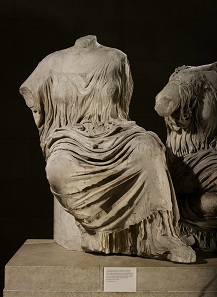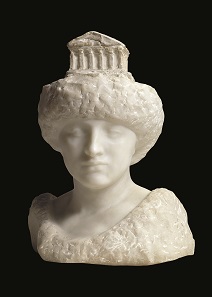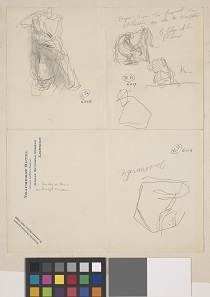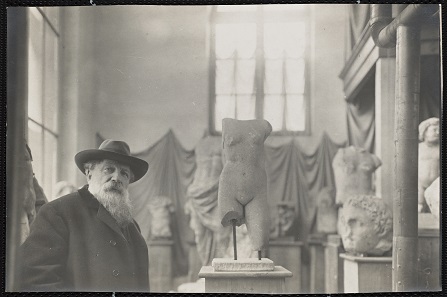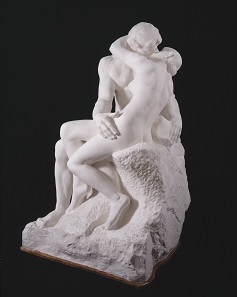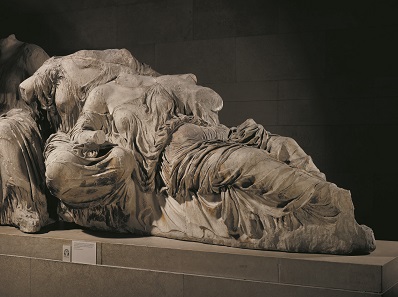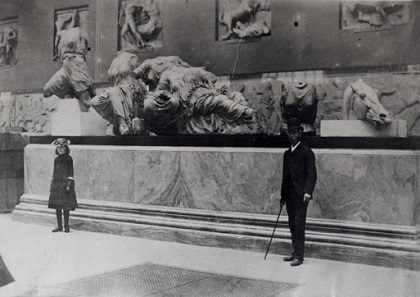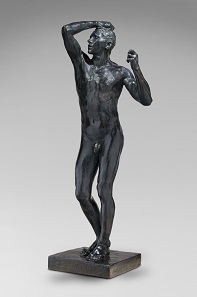January 18, 2018 – Auguste Rodin (1840-1917) was one of the greatest and most innovative sculptors of the modern era. However, it is little known that Rodin took his inspiration, in large part, from the works of the fifth-century BC sculptor Pheidias who is known as the artist who conceived the Parthenon sculptures.
Goddesses in diaphanous drapery, figures L and M from the east pediment of the Parthenon, about 438-432 BC, Marble. © The Trustees of the British Museum.
From 26 April to 29 July 2018 the British Museum will present works by Rodin in a new light and explore how he admired the art of antiquity, particularly that of ancient Greece. Supported by Bank of America Merrill Lynch, ‘Rodin and the art of ancient Greece’ in the Sainsbury Exhibitions Gallery will reveal how Rodin regularly travelled to London and visited the British Museum to sketch and seek inspiration.
Auguste Rodin (1840-1917) Pallas (Athena) with the Parthenon, 1896 Marble and plaster. © Musée Rodin.
For the very first time, visitors will be able to appreciate Rodin’s extraordinary talent as a sculptor by showing his work alongside the very Parthenon sculptures that inspired him. This comparison will provide unique insight into the full breadth and depth of Rodin’s vision, and provide new insight into the sculptures of an artist that everyone thought they knew.
Auguste Rodin (1840-1917), Sketches including figure K from the Parthenon and a metope from the south side of the Parthenon, 20 February 1905. Graphite on paper © Musée Rodin.
Thanks to a collaboration with the Musée Rodin in Paris, over 80 works in marble, bronze and plaster, along with some of Rodin’s sketches will be displayed in conversation with ancient Greek art. The show will allow visitors 360 degree access to many of the works which will be displayed at eye level as if they were in a sculptor’s workshop. The exhibition design takes inspiration from Rodin’s home and studio in Meudon outside Paris, and the Sainsbury Exhibitions Gallery will be filled with natural light at both ends of the space for the first time since it opened in 2014.
Rodin in his Museum of Antiquities at Meudon on the outskirts of Paris, about 1910 Photo: Albert Harlingue. Image © Musée Rodin.
The exhibition will open by exploring the influence ancient Greece had on Rodin’s approach to his art. In both Meudon and Paris, he displayed these pieces among his own works, on crates, stands or plaster columns.
Auguste Rodin (1840-1917), The Kiss, large version, after 1898, Plaster, cast from first marble version, of 1888–98 © Musée Rodin.
This exhibition will reveal that Rodin’s famous work The Kiss (1882), …
Rising goddess, figure K from the east pediment of the Parthenon, about 438-432 BC Marble © The Trustees of the British Museum.
… evokes two female goddesses, originally on the East Pediment of the Parthenon, one of which reclines luxuriously in the lap of her companion. The British Museum is borrowing an important version of The Kiss from the Musée Rodin. It is a plaster cast of the first marble example and it became the version which Rodin would display in exhibitions and from which others were copied. Both the Parthenon goddesses and Rodin’s marble Kiss are carved from a single block of stone with one figure melting into another.
The Parthenon gallery in the British Museum, about 1890. Photograph. © The Trustees of the British Museum.
Rodin first visited London and the British Museum in 1881 and was hugely impressed by the collection, particularly the sculptures of the Parthenon. He visited London throughout his later life, and in in 1902, he said “in my spare time I simply haunt the British Museum”. Rodin continued to visit the Museum until shortly before his death in 1917. Coming on loan from the Musée Rodin are a number of Rodin’s sketches, including 13 of the Parthenon Sculptures. Some of the sketches were done on headed notepaper from the Thackeray Hotel where Rodin stayed when he was in London, right opposite the British Museum.
Auguste Rodin (1840-1917), The Age of Bronze, 1877. Bronze. Sandcast before 1916 © Musée Rodin.
Ian Jenkins, exhibition curator at the British Museum, said “Like many ancient archaeological sites, the Parthenon and its sculptures had been damaged and weathered over centuries. Rodin, however, took inspiration from the powerful expression that they conveyed through the body alone, as many of them were headless. He even removed the heads and limbs from his own figures to make them closer to the broken relics of the past. By doing so, he created a new genre of contemporary art – the headless, limbless torso.”
Unmounted youths preparing for the cavalcade, block from the north frieze of the Parthenon, about 438-432 BC, Marble, © The Trustees of the British Museum.
Rodin never sculpted copies of the Parthenon figures, but instead sought inspiration from them. The inclusion of some of the Parthenon Sculptures will allow the exhibition to explore Rodin’s fascination with them. By positioning some of the Sculptures with works by Rodin, the exhibition will allow us to see the influence on Rodin’s artistic work by directly comparing the Parthenon Sculptures with Rodin’s works for the first time. This exhibition will allow visitors to understand the extent of the influence of the art of antiquity, in particular the Parthenon Sculptures, on Rodin and appreciate the full breadth and depth of Rodin’s unique vision and extraordinary achievement as a sculptor.
For more information on this exhibition go to the British Museum website.
And this is the official online presence of the Musée Rodin.




